There’s no shortage of ways to learn and share information about beekeeping. Between the internet, social media, and discussions with other beekeepers, a new beekeeper will quickly learn that if you ask 10 beekeepers the same question, you’ll likely get 11 answers – or maybe more.
At times this information stream of the modern era can start to become overwhelming. More often than not, the old stand-by – a book – can be a refreshing escape. For new beekeepers and experienced beekeepers alike, having a small library of beekeeping books on hand is always nice to have when getting started, when questions might come up along the way, or just to pass the time on a rainy day.
Beekeeping Basics
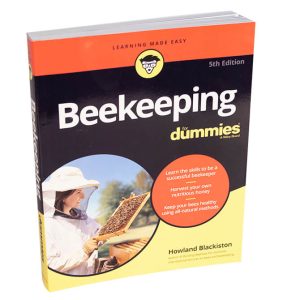
For those just getting started in beekeeping, how-to books are an invaluable resource. One very popular option is Beekeeping for Dummies. Part of the Dummies series of books that cover just about every topic imaginable, this beekeeping title is an easy-to-read book on how to get started and manage hives, and you’ll learn some interesting information about bees along the way, too. A great book to read before you get your bees and to have on the coffee table to turn to when simple questions come up.
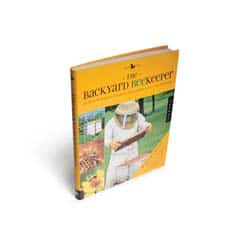
For hobbyist beekeepers, The Backyard Beekeeper is another title that is nice to have on hand. This book covers many of the same topics as Beekeeping for Dummies but is aimed further at hobbyist beekeepers and features more of a standard, instructional book type of flow, while still containing enough pictures and infographics to keep the book out of textbook type of territory. Further, it’s written by a different author – so naturally you can cross-compare and then make your own call from there.
For those with more of an informational-based, scientific mindset, The Beekeeper’s Handbook stays with more of an informational type of textbook approach that sticks to the point and focuses on the information, complemented with to-the-point illustrative work. If you’re someone who wants a great resource and prefers to read more information-packed pages, this book is worth a look.
A beautifully illustrated and detailed book covering a wide range of beekeeping topics, including – but going well beyond – beekeeping is The Beekeeper’s Bible. It starts with the historical record of bees and beekeeping, its middle sections are about life in the colony and the practicalities of beekeeping plus include the details of how honey, beeswax, and other products are harvested, while the final section offers a delightful range of honey-based recipes and a discussion of home crafts. This is a glorious book and is highly recommended.
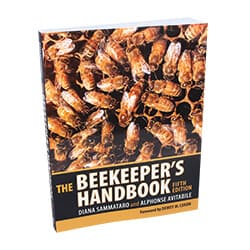
Storey’s Guide to Keeping Honey Bees is a great book for new beekeepers that is to the point and easy to read without diving into possible informational overload territory. Bolded where needed to remain skimmable when you’re in a hurry, but with enough information to learn more when you’re not, the book is a nice blend of styles. If you are looking for a no-nonsense…and perhaps opinionated (this is beekeeping, after all) guide to start beekeeping, this is a great title to have in your collection.
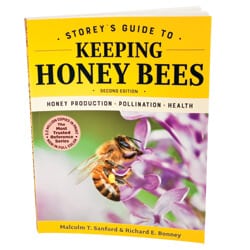
The Science of Bees
Even if you don’t keep bees, honey bees can be fascinating to learn about. If you do keep bees, it seems that learning about their behavior is a never-ending pursuit. In both cases, many books are out there that dive into the complicated and extensive topic of bee biology.
Understanding Bee Anatomy will surely open your eyes regarding what makes a bee a bee. With 600 high-quality photographs, including electron micrographs and stained microscopic images, you’ll be able to see bees in a way you’ve never seen before.

As beekeepers, we focus so much on the western honey bee, that at times we may forget that many, many other types of bees inhabit the planet. The Bee: A Natural History is a fascinating look at the more than 20,000 bee species on earth, their evolution alongside the evolution of flowers, and where those bees stand today. Bees descended from carnivorous wasps!? Who knew? This is just an example of things you can learn from this book, which dives into everything from leaf-cutter bees to solitary bees and more.
If you’d like to dive even further into the bee species in North America, this perfect “coffee table book” is the one for you! The Bees in Your Backyard includes tons of glorious photographs and details about hundreds of bee species in North America. For every bee covered, there is a wealth of information. This is one of the best reference-oriented books you will find related to bees.
Being able to see a honeybee in its natural setting is a relatively rare thing in this world… Most honeybee colonies exist within apiaries, not out in the wild. Following the Wild Bees: The Craft & Science of Bee Hunting explores the lost art of “bee hunting” and explains how you can find & follow wild bees to experience nature in a truly amazingly beautiful and rewarding way. Author Thomas D. Seeley’s (the same author that wrote Honeybee Democracy which we discuss below) love for bees shines through on every page of this wonderful book as he reflects on a pastime that has almost – but not quite – gone for good.
Inspecting Your Beehive
While getting your hives started and up and running is one thing, it’s called beekeeping for a reason. Keeping those bees requires management and troubleshooting specific issues, and as complex as beekeeping can be there is no shortage of book titles available on such subjects.
More in-depth than just a beginner book, The Hive and the Honeybee is suitable for any beekeeper’s bookshelf. Considered by many to be one of the greatest reference books on beekeeping, its 1,057 pages cover it all. In a revised work that got its start at the hands of people with last names like Langstroth and Dadant, you know this one will be worth the read – for the information as well as for the lessons a reader will gain in beekeeping history.
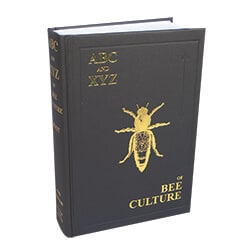
The ABC & XYZ of Bee Culture is another classic book, considered to be the encyclopedia of beekeeping all in one book. In its 42nd edition, the book features 831 pages with hundreds of photos. For years, this has been considered by many to be one of the best classic reference books available on beekeeping that you can get.
One major concern for any beekeeper is the management and control of swarming. Written by L.E. Snelgrove, Swarming: Control and Prevention was written in 1936 and is a book that has without a doubt, stood the test of time. Books like this are worth the read to gain historical perspectives as much as anything. But while some of the equipment and techniques may have changed over the years, and then Varroa showed up, the honey bee has remained much the same. To get started with swarm control, look no further than this book written by the inventor of the Snelgrove Board himself.
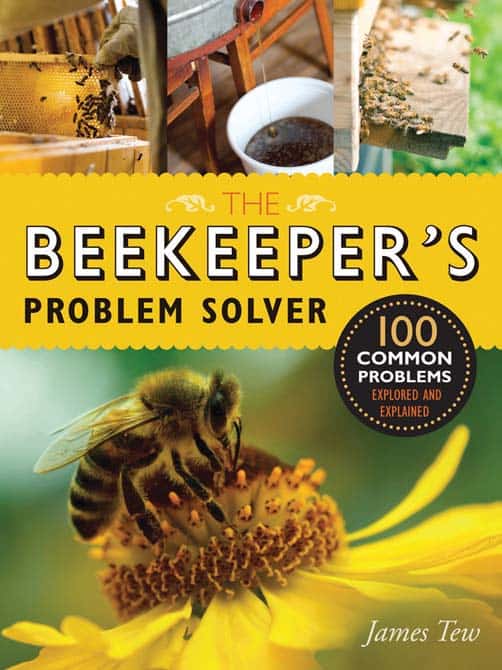
While swarming is one thing, there are a whole host of other issues that can keep a beekeeper guessing in their apiary. When problems arise that need a resolution, The Beekeeper’s Problem Solver features 100 common issues encountered by beekeepers, followed by their solution. It doesn’t get much easier than that, and best of all, the book even includes information on how to avoid those problems to begin with.
For beekeepers in northern climates, special challenges will be faced over long winters and during shorter summers. The University of Minnesota Extension’s book on the subject – Beekeeping in Northern Climates – features 75 pages devoted to northern beekeeping with 10 accompanying illustrations. Not only that, but with the purchase of the book you’ll gain access to a companion 40-minute video on the University of Minnesota’s website, focused on beekeeping in those cold, northern locales.
Just like keeping bees up north requires unique considerations, so does beekeeping in a city…no matter where you live north to south. Keeping Bees in Towns & Cities looks at keeping and managing honey bees, and all from the perspective of a beekeeper in an urban environment.
Bee Health
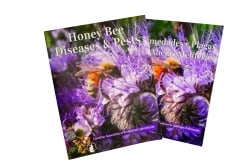
Published by the Canadian Association of Professional Apiculturists, Honey Bee Diseases & Pests looks at honey bee diseases, both those that are common and those of the more exotic and rare variety. Combined with information on integrated pest management and treatment methods, this 68-page title looks at a wide variety of honey bee diseases and treatments.
Honey Bee Veterinary Medicine details the management of honey bees from a veterinary point of view and covers a wide range of topics from medicine itself, to climate change and antibiotic resistance. This more scientifically oriented title is written by Nicolas Vidal-Naquet, DVM – a lecturer in honeybee biology and diseases at the Veterinary School of Alfort, France.
Bee Health and Veterinarians provides an overview of beekeeping from a medical standpoint and is catered towards practicing veterinarians who may need to work hand in hand with beekeepers to address certain diseases.
In this day and age, beekeepers will go to nearly any length in the fight against Varroa mites. In Increase Essentials, author Larry Connor details a method for Varroa control that utilizes increases by way of nuc colony utilization, having spare queens on hand, and the use of local queens and bees for successful beekeeping.
Honey, Pollen, and Foraging
While extracted honey is one thing, making comb honey is an entirely different skill – or art, altogether. Books to check out to learn more about comb honey include Comb Honey Production, by Roger Morse. This book focuses on traditional methods of producing comb honey. Honey in the Comb, by Eugene Killion, also looks at comb honey production – both square and round sections – and provides insight into colony management and swarm control along the way.
One of the most interesting things in beekeeping is watching honey bees bring in pollen. Varying by season and coming through in nearly every color, determining exactly what pollen is being brought in can get to be quite the guessing game. A Colour Guide to Pollen Loads contains a key with 500 colors and describes 268 plants. The book is focused on European plants but can be of interest and helpful for beekeepers worldwide.
About Beekeeping
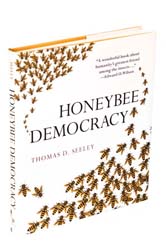
Honeybee Democracy, written by Thomas D. Seeley, evaluates the swarming behavior of the honey bee and in particular the decision-making processes made by the colony and how those decisions are made. Applicable not only to bees but to people as well, this book is both informative regarding the keeping of bees and is also food for thought in many other regards.
The Land of Milk and Honey provides a history of beekeeping in Vermont, and would still be of interest to anyone with a passion for beekeeping across the country. From the early 1800s and onwards, the book details the people and the inventions along the way, focusing on the relationship between bees and people and how today that is both similar – and different – from the early days.
Bee People and the Bugs They Love, by Frank Mortimer, is an entertaining read that gives the readers facts about the bees – with some storytelling along the way. Both humorous and informative, this book by “Frank the Bee Man” is a fun and refreshing read.
Another book that balances the traditional practicalities of beekeeping with a vivid and heartfelt passion for bees is Beekeeping: A Personal Story. While many books follow a somewhat predictable pattern in how they present beekeeping – a mechanical set of step-by-step set of instructions – this book differs by mixing in a healthy dose of the emotional and thoughtful sides of beekeeping. If you are looking for a book that deviates from the norm and relays the emotional aspects of beekeeping then this is a very good choice.
Continuing Your Beekeeping Education
From books on beginning beekeeping to specialized and advanced books on bee biology and everything in between, sitting down to read a book is a great way for beekeepers to get their information fix in a streamlined, focused fashion without the additional chatter and noise you might have to sift through from other sources.
For beginners, some of these books can be like having an on-call beekeeping mentor right on the bookshelf. For more advanced beekeepers, these books can help to refine your craft, learn something specific, or expand upon existing knowledge about the bees themselves. Either way, when it comes to beekeeping, the learning never seems to stop. And these days, while there are many ways to learn – we’d argue that turning the page of a book and learning that still can’t be beat!